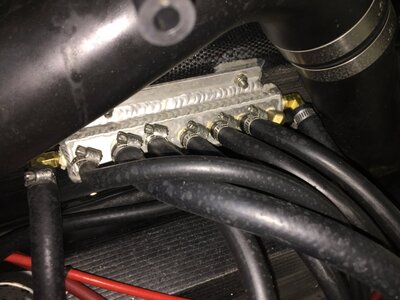Christian_83
Xscream
- Location
- Denmark
I think this is where you are stumped. however, disclaimer, I haven't done back to back testing myself but an easy test to set up none the less. I'd be very very surprised to see a liner relationship. It takes time for heat to dissipate and absorb into water. "A watched pot never boils..." If your flow rate was 100x of what it is today i'd put money on a melted piston as the water is moving so fast it does not have time to absorb any heat
The flip side is also true. If you don't flow water at all you'll stick a piston because water can only absorb so much energy/heat.
Its a balancing act but unless you guys have a pro level tune you are way over thinking it
Well i disagree with you, water is a very good heat transfer medium. So only downside i would see from flowing to much water, would be cold engine
But i do agree that most people properly are overthinking this



